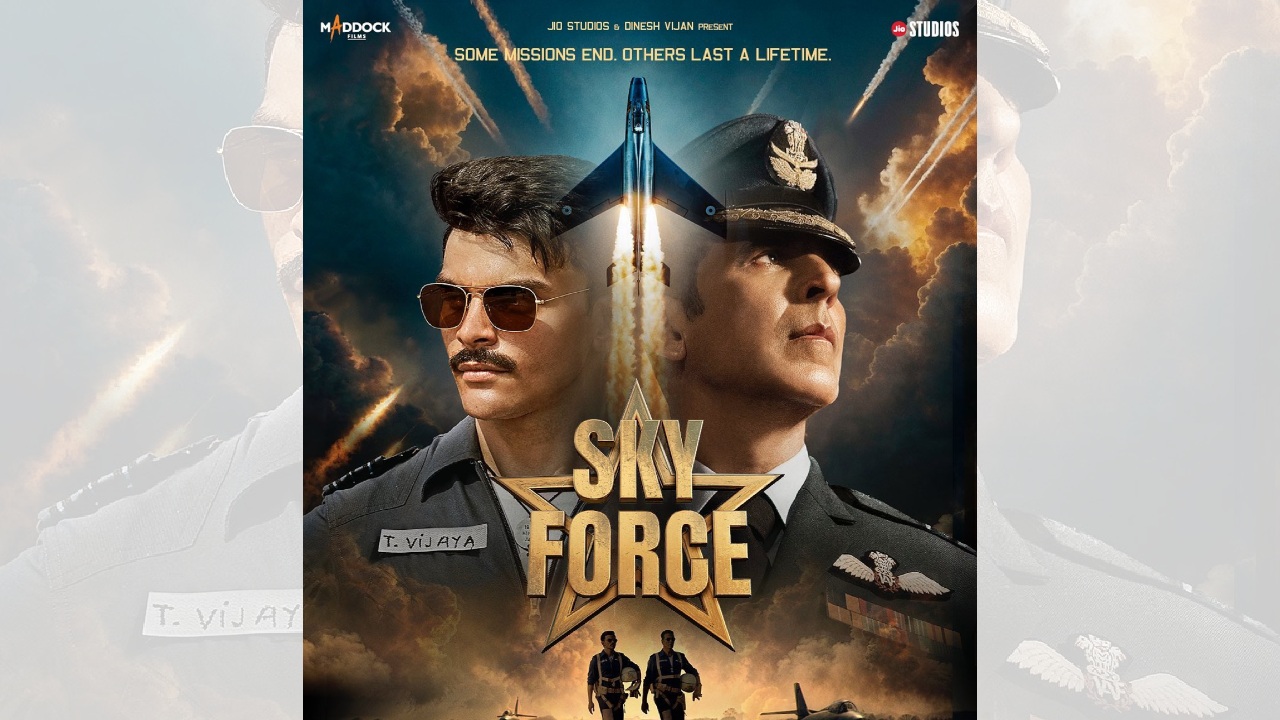Have you ever truly wondered what goes into making a film? Beyond the high-octane performances, breathtaking visuals, and coherent narrative lies an intricate web of creativity, labour, and an unrelenting pursuit of authenticity.
While actors remain the face of a film, the unsung heroes—the cinematographers, production designers, lighting experts, and countless others—work tirelessly to breathe life into what you see on screen. And when it comes to period films that demand historical accuracy, the challenge magnifies tenfold.
This is precisely what Sky Force builds its foundation on—a war drama that doesn’t just narrate history but recreates it with meticulous precision. Inspired by true events, Sky Force, shot in ‘52 days’ tells the story of India’s first airstrike—the Sargodha airbase attack of 1965—through the lens of the Indian Air Force’s courage and sacrifice.
Headlined by Akshay Kumar and featuring debutant Veer Pahariya, the film is not just a visual spectacle but an immersive experience that demands unparalleled dedication from its makers.
The Challenge Of Realism: Crafting War Zone At The Hakimpet Airbase
Recreating history is no ordinary task!
Every detail, from the aircraft’s metallic sheen to the eerie glow of an airbase under attack, had to be just right. The cinematographer, Santhana Krishnan, along with his team, sailed on an arduous journey to bring this vision to life.
The Adampur Action Sequence—one of the most pivotal scenes in the film—was shot at the Hakimpet Airbase, an active military site. This brought about a unique set of constraints. Not only did the team have to respect military protocols, but they also had to construct a visually compelling battlefield without interfering with actual operations. And to top it all, they had mere hours to set up and dismantle their elaborate lighting and rigging systems.
The Cinematic Eye: Lens And Camera Mastery
For a war film that oscillates between history and high-intensity action, every visual choice had to serve a purpose. The team conducted extensive tests before settling on the ARRI Alexa 35—a powerhouse camera that could deliver the vintage war-time aesthetic they sought.
Pairing Cooke S4i lenses with Hawk V-Lite anamorphic lenses was a masterstroke. This fusion of anamorphic and spherical lenses helped sculpt a unique visual language—one that blended grandeur with realism, nostalgia with raw intensity. Two distinct colour palettes were devised to delineate different moods in the film, ensuring that every frame exuded authenticity.
Lighting The Battlefield: Engineering Night-time War
One of the most formidable tasks lay in illuminating the 1-kilometer-long airstrip at Hakimpet Airbase, where Indian Mystère aircraft were stationed. With large-scale explosions and aerial combat sequences, the lighting had to be dynamic, flexible, and yet historically grounded.
The solution? A strategic combination of Skypanels, Vortexes, Dinos, and CreamSource SpaceX lights, all meticulously positioned to enhance the depth and drama of the shots. Mobile rostrum structures—five and twenty feet high—were built on wheels to allow swift lighting adjustments. This allowed the crew to align their setups with the ongoing pyrotechnic effects, capturing the raw ferocity of war without losing cinematic depth.
But the real test came with the night sequences. The vast Hakimpet Airbase had to be lit in a way that maintained the illusion of a natural moonlit battlefield while ensuring visibility for the camera. The team devised an ingenious setup—six towering cranes hoisting M90s and 18Ks to drench the airbase in an evocative, battle-hardened glow. The result? A spellbinding interplay of light and shadow that made the chaos of war feel hauntingly real.
Precision In Post-Production: The Final Battle
What began as a meticulous on-set lighting arrangement transformed further in post-production. Colour grading became an art in itself, ensuring that every hue mirrored the film’s emotional core. Cinematic intensity was heightened through VFX, but never at the cost of authenticity. Every explosion, every flicker of fire, and every aircraft manoeuvre was fine-tuned to appear organic, ensuring the audience felt the weight of history as it unfolded on screen.
Inferring, Maddock Films, Jio Studios and the Indian Air Force played an instrumental role in making Sky Force a reality. From location permissions to advisory inputs, their involvement ensured that the film didn’t just depict history—it honoured it.
Final Take: When Cinema Meets Commitment
In an age where AI and VFX dominate filmmaking, staying true to authenticity is a formidable challenge.
The film is a toast to human ingenuity, resilience, and the relentless pursuit of realism. The sweat and toil of an entire team—from the cinematographers and lighting artists to the production designers and action coordinators—culminated in a cinematic spectacle that doesn’t just entertain but immerses.
So, the next time you watch a film and find yourself lost in its breathtaking visuals, remember the invisible hands that orchestrate the magic behind the scenes. For every actor in the spotlight, there’s an army of creators ensuring that what you see is nothing short of extraordinary.
And Sky Force is proof that when dedication meets vision, history is not just remembered—it is relived.


